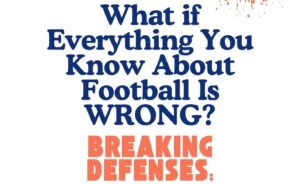
Indefensible Spaces and Runners: The Art of Stretching Opponent Lines
There is a crucial parameter when it comes to defending that all teams strive to be efficient at: the distance between lines, the distance of the block, the distance between players… The shorter it is, the harder it becomes for the opposing team to break through and surpass it.
In modern football, with the tools available to us, we know precisely what the optimal distance should be for our team to succeed. Many of these metrics are used when preparing training exercises to mechanize behaviors that we know can lead to success, or even during competition, with analysts providing feedback on whether we are within the optimal parameters. Avoiding an increase in distance between lines is a fundamental task to maximize defensive success.
There are countless examples of historic teams whose defensive organization was defined by maintaining the shortest possible distance between lines. Arrigo Sacchi’s AC Milan can be considered a pioneer in this aspect. Claudio Ranieri’s Leicester City, which won the Premier League, is another example, as well as Paulo Autuori’s São Paulo or Marcelo Gallardo’s River Plate in South America, both of whom won the Copa Libertadores.
But today, we will focus on the opposite. How can we stretch these lines?
Nowadays, this characteristic is embedded in the principles of every team or club. In many youth academy game models, you can find the principle of a “compact team” or “tight lines”…
Most elite clubs have the ability to reduce the distance between lines, often accompanied by a low block, making it extremely difficult to break through or play between them.
In many cases, the opposing team forces play towards the flanks, preventing interior play. This results in our winger or attacking midfielder receiving the ball in wide areas. Their ability to beat their direct opponent is crucial to success. However, this one-on-one scenario often turns into a one-on-two, making the task even harder.
There are players capable of dribbling past opponents: Vinicius, Lamine Yamal, Doku, Sané, Savinho, Rafael Leão, Dembélé… but they form a very exclusive, talented, and expensive group that not every club can afford.
In other cases, the opponent sets up in a mid-block, offering space behind them. This typically translates into a team with fast players in the final third, an offside trap specialist, high pressing on the ball carrier, or at the very least, a level of harassment to prevent accurate long balls.
If I manage to play a long ball successfully, I might succeed, but the probability decreases. Controlling a 10-meter pass is not the same as controlling a 40-meter ball. Often, a 10-meter pass can be followed by another pass if a defender closes in, while a 40-meter pass will require technical execution at speed, likely under defensive pressure. But it can be done: Mbappé against Manchester City in the Champions League is a perfect example, as is Omar Marmoush against Newcastle.
As a coach, I want to increase my players’ chances of success. I want them to succeed, and for that, I seek to create scenarios that make their actions as simple and effective as possible. However, sometimes the actions that lead to success are not the most enjoyable ones.
As a player, I prefer to receive balls at my feet with the right amount of time and space to create, finish, and score. If I have to make a deep run, I want it to be to receive the ball. If I position myself wide, it should be to receive multiple passes. If I play as a central striker and fix the defensive line, I want to be able to drop into midfield to receive.
Sometimes, the actions a team needs are not necessarily the ones a player wants to perform. These are deep runs not to receive the ball but to condition the opponent’s defensive line and create space between defenders and midfielders. It means holding width and making multiple deep runs (even without receiving the ball) to provide passing options or open up space for a teammate. It means occupying defenders and moving between center-backs to prevent them from stepping up to press a teammate about to receive possession.
Deep runs make teams exciting to watch, dynamic, and unpredictable. They create countless attacking opportunities that can benefit the team in the long run.
I call these players Runners and I believe they are an essential part of any attacking unit. One-on-one ability is something you either have or don’t, but the capacity to repeat high-intensity runs is something every player can contribute to the team. Talent and work rate are not mutually exclusive.
In the next articles, I will discuss how we train these behaviors. I will share two very different examples: one with a ball-based warm-up and another with a possession drill.
Alongside the concept of Runners another key movement I like to train with my teams—one that will be featured in the warm-up drill I just mentioned—is the forward’s movement to receive the ball by approaching the ball carrier, even though this often creates little to no immediate advantage.
At another time, we will explore the concept of “indefensible spaces,” or rather, spaces/movements that defenders struggle to control. I believe there are movements that, due to their natural positioning and the historical tendencies of the game, defenders simply cannot track. And if they do, they create imbalances in key areas. But we will delve into that later.
The specific movement I like to train with strikers is a diagonal run away from their direct defender’s back. In the drill, you will see how our forwards work on this movement to make it easier to receive the ball and create imbalances that benefit the team.
